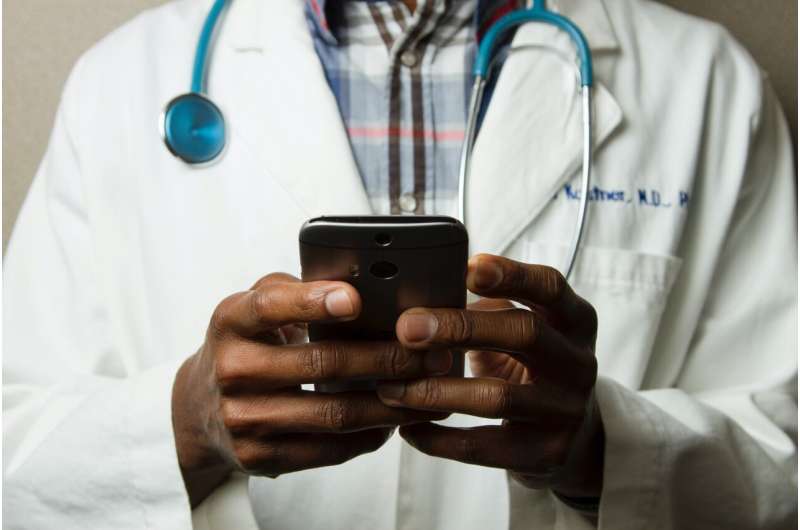Study explores improving patient care via more effective clinician communication

Hospitals are increasingly replacing pagers with clinical texting systems that allow doctors, nurses and other clinicians to use smartphones to send and receive messages related to patient care while maintaining compliance for privacy and security. A new study from the Regenstrief Institute, Indiana University School of Medicine and Indiana University Health Methodist Hospital is one of the first to describe the clinical texting experiences of hospitalists and nurses, and to consider its effect on inpatient medical team communication. Ultimately, this field of research could impact clinical outcomes, such as patient safety or hospital readmission rates.
"Communication is essential to hospital workflow, yet we found that there is a lack of shared understanding among clinicians regarding how to use clinical texting," said study corresponding author Joy L. Lee, Ph.D., M.S., a Regenstrief Institute research scientist and IU School of Medicine assistant professor of medicine. "Clinical texting is a double-edged sword—it's easy to contact fellow clinicians, which can be viewed as good or bad. Each hospital or hospital system needs to figure out how to use clinical texting to optimize communication, workflow and patient care and then develop use guidelines."
In pursuit of long-term solutions, the study authors asked hospitalists and nurses about their experiences with team communication by texting. Overall, nurses and hospitalists interviewed by the study authors held positive impressions of clinical texting. They noted ease of access, ability to send photos and capacity to record communications as benefits of texting. However, they expressed some frustration including challenges of implementation and a lack of shared understanding about text appropriateness. Doctors, but not nurses, were critical of the high volume of texts.
The study findings have implications for healthcare providers and researchers as well as healthcare administrators as they develop guidelines and etiquette for clinical texting. One size of guidelines and etiquette may not fit all, Dr. Lee notes.
Although the study did not report on implementation challenges in depth, the authors developed a robust checklist of considerations to maximize the benefits of clinical texting, minimize user dissatisfaction and build shared understanding of use. Recommendations include generating team buy-in and developing user consensus about various aspects of appropriateness. For example, is it appropriate to text a non-urgent message and, if so, under what circumstances is it proper to do so?
The study, "Qualitative Analysis of Team Communication with a Clinical Texting System at a Midwestern Academic Hospital," is published in Applied Clinical Informatics.
More information: Joy L. Lee et al, Qualitative Analysis of Team Communication with a Clinical Texting System at a Midwestern Academic Hospital, Applied Clinical Informatics (2022). DOI: 10.1055/s-0042-1744389. www.thieme-connect.de/products … .1055/s-0042-1744389




















